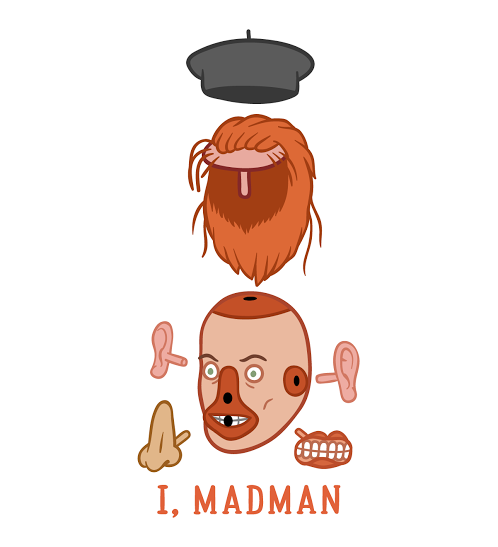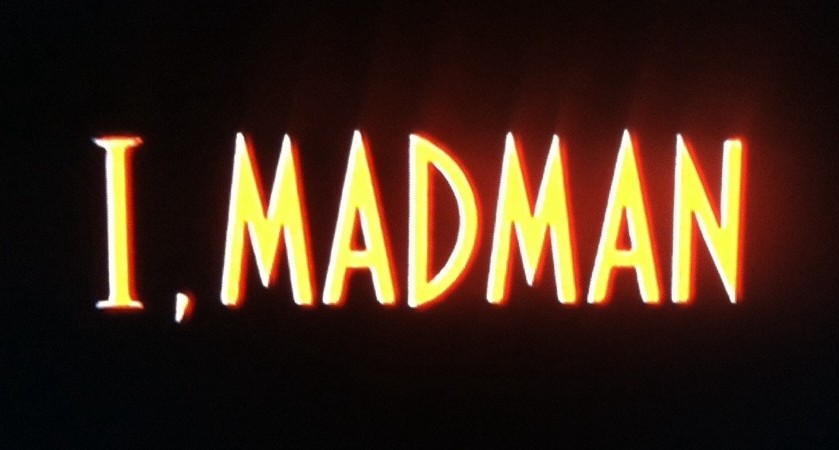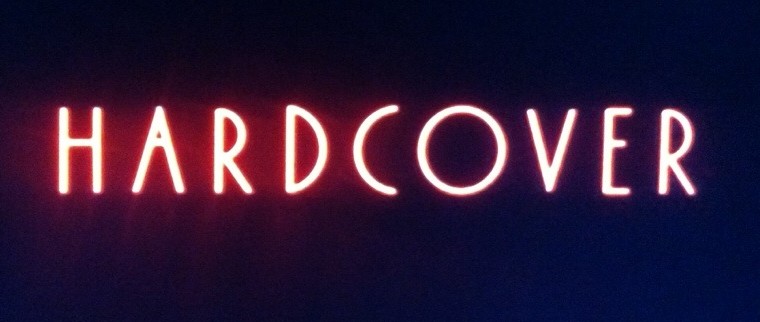The October Diaries: I, Madman
 Illustration by Max Brown
Blurbs by Seann, Sean & Christof
Illustration by Max Brown
Blurbs by Seann, Sean & Christof—
October 18th, 2014:
I, Madman
Year: 1989
Director: Tibor Takács
Format:Â DVD
From Wikipedia: Second-hand bookstore clerk Virginia Clayton (Jenny Wright) becomes absorbed in the book ‘I, Madman’ by Malcolm Brand (Randall William Cook). In the book, the deranged, deformed Dr Kessler is obsessed with beautiful actress Anna Templar and kills victims, sewing part of each victim’s face onto his own. But as Virginia continues to read, someone starts to emulate the killings in the book, targeting the people around her.
Tagline: “Lose Yourself in a Good Book”
Seann McCollum’s Take:
Look, first of all, I don’t know what I’m doing watching this horror crap. I’m more of a Coen Brothers/Charlie Kaufman guy when it comes to movies. Besides, isn’t one Sean in the room enough?
But, okay, here we go. It’s Halloween season, and I’m game for some cultural slumming. 1989 was an amazing year for movies…K-9, Who’s Harry Crumb, No Holds Barred…and there was also I, Madman, which is due for a Criterion rescue job, complete with requisite commentary by master of horror Peter Bogdonovitch.
Anyways, this thing starts off promisingly enough, in a seedy hotel on Hollywood Boulevard in the thirties, where a creepy old man has apparently bred a jackal boy who of course escapes and starts eating people. No sooner has the body count begun than the book is literally slammed shut and we realize we’ve been reading along in the present day (i.e., the late eighties) with the protagonist, a whiny, hysterical blonde whose imagination somehow brings the madman from the pages to razor-wielding life. Now, I have a soft spot for stories in which fictional characters become real, and I would have been willing to overlook the cheap shot of the opening fake-out if what followed wasn’t so predictable and trite. Like the madman’s face, this is a poorly-stitched together patchwork of scraps stolen from other films, and I found myself longing for the return of the jackal boy from the opening sequence.
The good news is, my wish was eventually granted at the very end, and though that made even less sense than anything that preceded it, the jackal boy’s stop-motion mayhem was delightful, and seemed like a peck into the batshit crazy film this could have been if… well, if almost every detail of the preceding ninety minutes had been changed, I guess. I did enjoy a scene with a schlubby old book agent who’s right out of some old b-picture about the ups and downs of life in Tinseltown, and at one point the madman or madghost or whatever channels the crazy organist from horror classic Carnival of Souls, which made me smile, but also kind of made me wish I’d just re-watched that instead.
The trailer included with the DVD showed that thing was originally called Hardcover, a marginally less generic title for a film which had the potential to be a lot of fun but ended up reminding me why I cling so tightly to the security blanket of my own snobbery.
Christof’s Take:
This was fun enough, with some good flourishes and big problems.
A used bookstore clerk gets hooked on a horror author’s pulp novels about someone who cuts off pieces of his face and sends them to his unrequited love, then in another book he starts killing people to cut off their face-chunks to sew back onto himself.
The events of the books start to happen in the periphery of our protagonist’s waking reality. As the body count starts to rise, she tells her theory to her detective boyf, who doesn’t believe her. This is pretty well-trodden ground, but initially the movie seemed up to the task of adding something to this. Unfortunately, it didn’t seem to live up to this. It wanted to be a fun movie, and not one that starts or continues a conversation about art through art. Or if it does, it’s vocabulary is limited.
The movie doesn’t employ the twist that she, the reader, has started committing these murders (that she is the “mad[wo]manâ€), which is fine by me, but what’s strange about it is that none of the police seem to find her story as cause for alarm. They think she is neither a suspect nor in need of help. Their general vibe in these scenes seems to be, “Oh, she’s crazy, but you know women: they’re all crazy.â€
The big “twist” happens when our lead finds a big, fat “NON FICTION†printed inside the book! Uh oh! You mean this shit is for real?!
There was a pretty cool sequence in the bookstore featuring a sort of page-storm as she approached the climax. And then after that, there was some nifty stop-motion animation of a creature summoned by the text. There was also the third best faint in the month. (Although only two movies this month have included fainting, so let’s hear it once more for Deadly Friend.)
Overall, the movie missed some good opportunities for tying the thing together. It seemed the makers of this movie introduced viable themes (control, recursion, and the obvious split between art and reality) and then they either forgot about them or didn’t realize they had introduced them.
A better movie with a similar premise and the exact same (parenthetically aforementioned) themes is In The Mouth of Madness.
Both of these films pay tribute to the King of the page bleeding into reality. (Stephen King – get it?) Both films do this through dialogue, but by placing him below that of their fictive authors. “It makes Stephen King read like Mother Goose,†in I, Madman, and “Sutter Cane happens to be this century’s most widely read author. You can forget about Stephen King. Cane outsells them all,†is a line from In The Mouth of Madness.
However, my absolute favorite part of I, Madman – what it did that felt fresh and interesting – was how when our protagonist would read in her apartment and get lost in the books, there was beautiful piano music playing, but it was a character playing it. We see out her window and into a window across the street, where an off-the-clock piano repair man massages the keys. Although reminiscent of the song-writer technique employed in Hitchcock’s Rear Window, this works on its own merits. And thematically speaking, this decision to make parts of the score diegetic (sound whose source is visually apparent or implied on screen) helps reinforce the idea of art crossing over into the “real” world.
If I, Madman sounds at all interesting, watch In The Mouth of Madness instead for a true slice of psychological art-horror.
Sean’s Take:
This was a good example of a movie that would have played better for me outside the context of a month-long marathon. As a standalone discovery I would’ve been more eager to hail its moments of ingenuity. Unfortunately, having it land smack-dab in the middle of October meant I have seen enough moments of  “pretty good†that my tolerance has been raised. “Pretty good†is just “okay†now. I’m feeling like I need a little more from a movie in order to make a real impression at this point. I just watched Society the night before this one and Society was so generous in what it gave me that it made the serving of goodness I, Madman served-up feel a little less filling.
The premise was low-hanging-fruit ripe. We follow a used bookstore employee as she becomes engaged in an enigmatic series of books (books with villains that might not be bound by the page!). This was fun, as it allowed the menace to take place in a variety of realities (book reality, dream reality and real-reality — well, real-movie-reality). Â We watched the trailer attached to the DVD and apparently it originally had the much more evocative title of Hard Cover, which would have opened up the franchise to at least two sequels (Paperback and Kindle).
I enjoyed how the logic of this one dictated that the terror was specifically bound to whatever part of the book she was most recently reading. Once she figures out this correlation, I, Madman takes a great turn and we end up with another satisfying finale — and, true to form, this lasting impression upped my enjoyment of the whole film significantly.
The special effects truly felt special at times, as director Tibor Takacz and his team* opted to utilize stop motion animation. Takacz also directed The Gate, which also took the time and had the discipline to create some spectacular stop-motion work.
I recommend this one, just maybe not in the middle of a thirty-one day horror marathon. It has enough going for it, that it deserves a little room to breathe.
*One of which, Randall William Cook not only acted in the film as our titular madman, but he went on to have a very successful career in special effects (The Lord of the Rings trilogy probably being the biggest feather in his cap).

